Trong thế giới đa dạng và của tiếng Anh, việc học và giao tiếp trở nên thú vị hơn khi kết hợp với những câu chuyện và hoạt động thực tế. Các bài tập viết ngắn gọn, dễ hiểu và các trò chơi tương tác sẽ giúp trẻ em không chỉ học được ngữ pháp mà còn cảm nhận được niềm vui trong việc sử dụng ngôn ngữ này. Hãy cùng chúng tôi khám phá những nội dung học tập hấp dẫn và thú vị trong bài viết này!
Chuẩn Bị
Trò Chơi Tìm Từ ẩn Tiếng Anh Liên Quan Đến Môi Trường Xung Quanh
Mục Tiêu:
- Giúp trẻ em học và nhận biết các từ tiếng Anh liên quan đến môi trường xung quanh.
- Khuyến khích trẻ em sử dụng trí tưởng tượng và kỹ năng tìm kiếm.
Cách Chơi:
- Chuẩn Bị:
- In hoặc vẽ một bức tranh lớn hoặc nhiều bức tranh nhỏ, mỗi bức tranh có chứa các hình ảnh liên quan đến môi trường xung quanh như cây cối, chim, cá, rừng, sông, biển, đám mây, mặt trời, mặt trăng, v.v.
- Trên mỗi bức tranh, ẩn các từ tiếng Anh liên quan đến môi trường xung quanh.
- Hướng Dẫn:
- Giới thiệu trò chơi và các từ cần tìm kiếm cho trẻ em.
- Thảo luận về ý nghĩa của các từ và cách chúng liên quan đến môi trường.
- Chơi Trò:
- Trẻ em sẽ được yêu cầu tìm các từ ẩn trong bức tranh.
- Mỗi khi tìm thấy một từ, trẻ em có thể đọc to và giải thích ý nghĩa của nó.
- Hoạt Động Thực Hành:
- Sau khi tìm kiếm xong, trẻ em có thể thực hành viết các từ tìm thấy vào một cuốn sổ hoặc tờ giấy.
- Trẻ em có thể vẽ thêm các hình ảnh liên quan đến từ đó để.
Bức Tranh Dự Kiến:
- Cây Cối:
- Trees, leaves, branches, flowers.
- Chim:
- Birds, wings, feathers, nest.
- Cá:
- Fish, water, scales, fins.
- Rừng:
- Forest, trees, animals, leaves.
- Sông:
- River, water, fish, bank.
- Biển:
- Sea, waves, fish, sand.
- Đám Mây:
- Clouds, sky, rain, sun.
- Mặt Trời và Mặt Trăng:
- Sun, moon, day, night.
Kết Thúc:
- Khen ngợi trẻ em vì những từ mà họ đã tìm thấy.
- Thảo luận về tầm quan trọng của việc bảo vệ môi trường và cách chúng ta có thể làm điều đó.
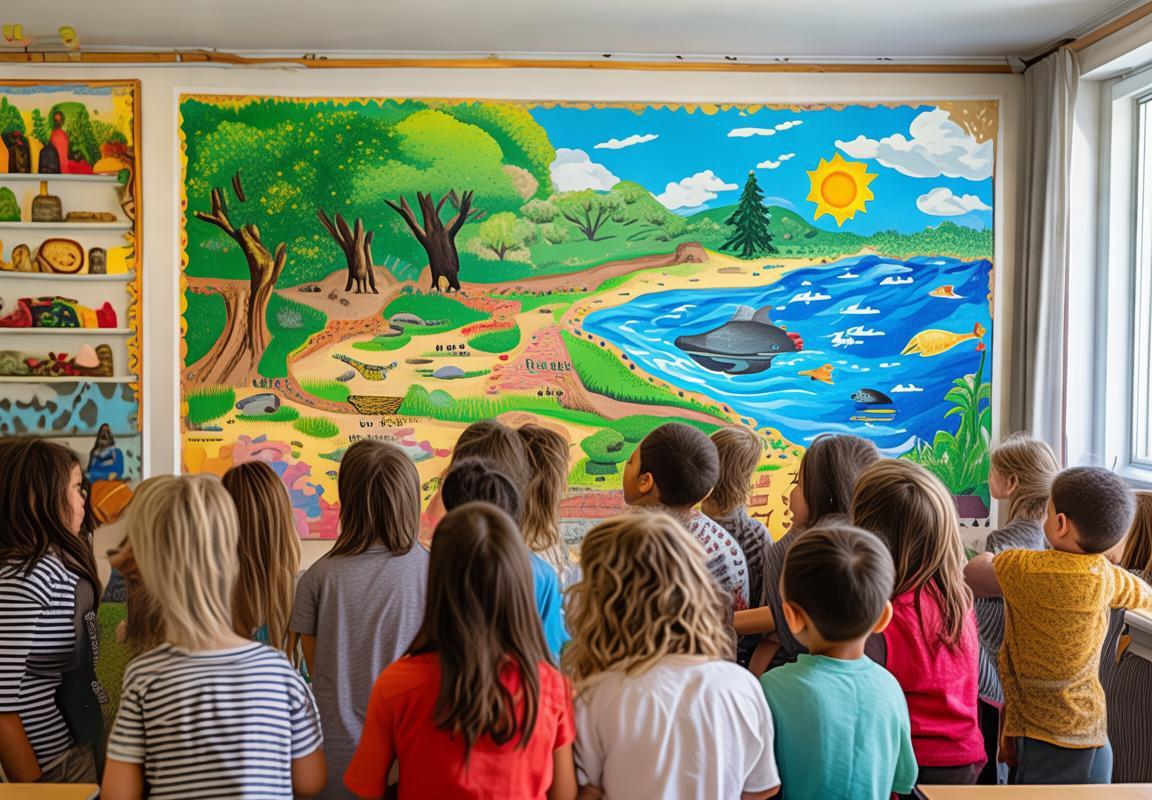
Hướng Dẫn
Chuẩn Bị
- Chọn Hình Ảnh:
- Chọn một số hình ảnh sinh động của các loài động vật như gấu, khỉ, voi, và chim.
- Đảm bảo rằng các hình ảnh này có kích thước lớn và rõ ràng để trẻ em dễ dàng nhìn thấy.
- In Hình Ảnh:
- In các hình ảnh động vật và cắt chúng thành từng mảnh nhỏ.
- Chuẩn Bị Đồ Dụng:
- Chuẩn bị một số đồ dùng đơn giản như bút, sổ tay, và một tờ giấy lớn để viết.
Lưu Ý
- Đảm bảo rằng không gian học tập của trẻ em sạch sẽ và thoải mái.
Bước 1: Giới Thiệu Hình Ảnh
- “Hello kids! Today, we are going to play a fun game. Let’s look at these pictures of animals.”
Bước 2: Đặt Vấn Đề
- “I will show you a picture of an animal, and you need to tell me its name in English.”
Bước 3: Chơi Trò
- Hình Ảnh Gấu:
- “Now, look at this picture. What is this animal? (Gấu)”
- Trẻ em sẽ trả lời và bạn có thể khen ngợi họ.
- Hình Ảnh Khỉ:
- “Next, what about this one? (Khỉ)”
- Trẻ em sẽ trả lời và bạn có thể khen ngợi họ.
- Hình Ảnh Voi:
- “And finally, what is this animal? (Voi)”
- Trẻ em sẽ trả lời và bạn có thể khen ngợi họ.
Bước 4: Hoạt Động Thực Hành
- “Now, let’s write the names of these animals on our paper. We can use the pictures as a guide.”
Bước 5: Kiểm Tra và Khen Ngợi
- “Great job! You did a wonderful job identifying the animals. Let’s check our work together.”
Bước 6: Kết Thúc
- “That was so much fun! Remember, learning new words is like opening a new door to a world of adventure. Keep practicing, and you’ll be amazing!”
Hoạt Động Thực Hành Chi Tiết
- Giới Thiệu Hình Ảnh:
- “Let’s start with the bear. Look at the big, fluffy animal with a thick tail. What do you think it is?”
- “Yes, that’s right! It’s a bear. Now, write ‘bear’ on your paper.”
- Đặt Vấn Đề:
- “Next, we have a monkey. It’s a small, agile animal with a long tail. What’s this?”
- “Correct! A monkey. Write ‘monkey’ on your paper.”
- Chơi Trò:
- “Finally, we have an elephant. It’s a very large animal with a long trunk. Can you guess what it is?”
- “That’s right! It’s an elephant. Write ‘elephant’ on your paper.”
- Hoạt Động Thực Hành:
- “Now, let’s practice writing these words. I’ll say the word, and you can write it down.”
- Kiểm Tra và Khen Ngợi:
- “Great job! You’ve written all the animal names beautifully. You’re learning new words every day!”
- Kết Thúc:
- “Remember, learning is a fun adventure. Keep exploring and you’ll find many new friends in the world of words.”
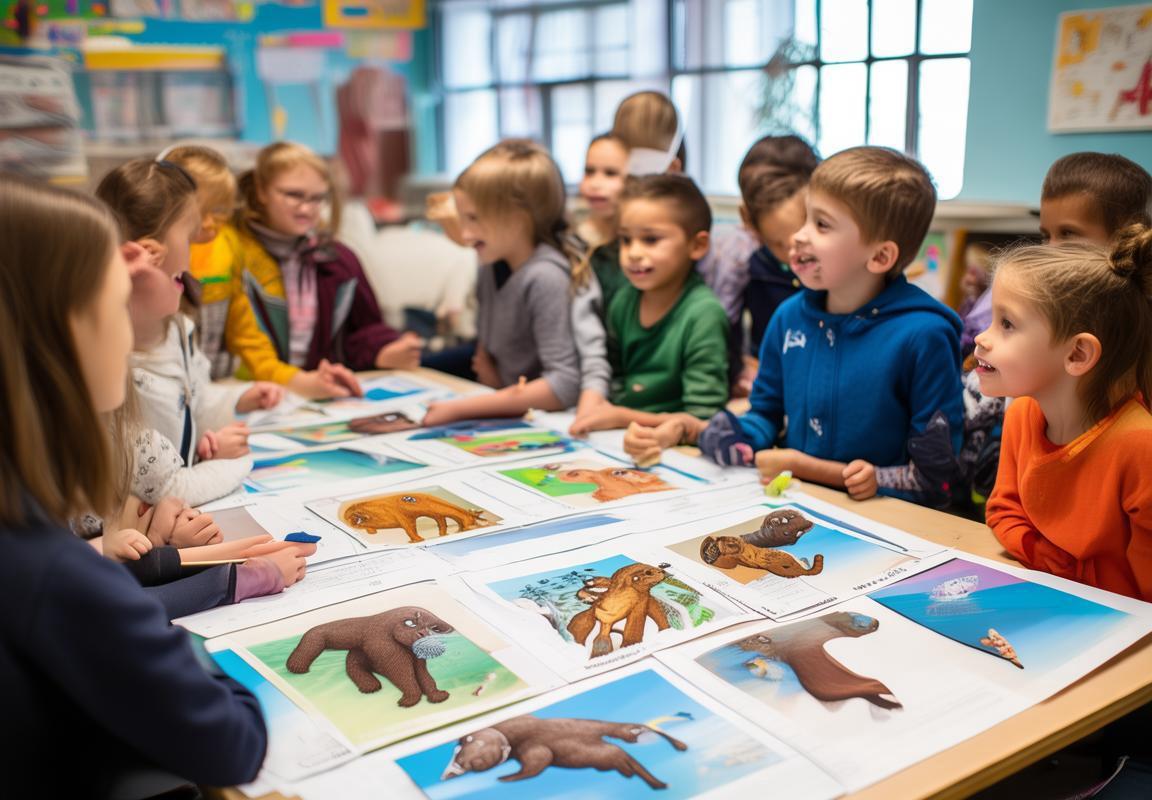
Chơi Trò
- Chuẩn Bị:
- Chuẩn bị một bộ bài với các hình ảnh động vật nước như cá, voi biển, rùa, và chim đại bàng.
- Đảm bảo rằng mỗi hình ảnh có một từ tiếng Anh tương ứng.
- Hướng Dẫn:
- Giới thiệu trò chơi và cách chơi cho trẻ em.
- Giải thích rằng mỗi hình ảnh đại diện cho một từ tiếng Anh mà trẻ em sẽ phải đoán.
- Bắt Đầu Trò Chơi:
- Trẻ em sẽ được chia thành các nhóm nhỏ hoặc chơi cá nhân.
- Người lớn hoặc giáo viên sẽ rút một hình ảnh từ bộ bài và đặt nó trước mặt.
- Đoán Từ:
- Người lớn hoặc giáo viên sẽ đọc tên của hình ảnh một cách rõ ràng.
- Trẻ em sẽ phải đoán từ tiếng Anh liên quan đến hình ảnh đó.
- Ví dụ: Nếu hình ảnh là cá, trẻ em sẽ phải đoán từ “fish”.
- Kiểm Tra Đáp Án:
- Khi trẻ em đoán, người lớn hoặc giáo viên sẽ kiểm tra đáp án.
- Nếu đoán đúng, trẻ em sẽ nhận được điểm.
- Nếu đoán sai, người lớn hoặc giáo viên sẽ đọc từ đúng và trẻ em sẽ học từ đó.
- Hoạt Động Thực Hành:
- Sau khi đoán xong, trẻ em có thể vẽ thêm hình ảnh hoặc viết từ đó vào một cuốn sổ hoặc tờ giấy.
- Trẻ em có thể kể một câu chuyện ngắn liên quan đến hình ảnh và từ đó.
- Kết Thúc:
- Sau khi tất cả các hình ảnh đã được đoán xong, tính điểm và khen ngợi trẻ em có điểm cao nhất.
- Thảo luận về các từ đã học và cách chúng liên quan đến động vật nước.
- Hoạt Động Thêm:
- Trẻ em có thể chơi trò chơi này nhiều lần để học thêm từ tiếng Anh.
- Người lớn hoặc giáo viên có thể tạo ra các câu hỏi mở về các hình ảnh và từ để trẻ em suy nghĩ và trả lời.
- Tạo Môi Trường Học Tập:
- Sử dụng hình ảnh và từ tiếng Anh để trang trí phòng học hoặc không gian chơi của trẻ em.
- Điều này sẽ giúp trẻ em tiếp cận và học từ tiếng Anh một cách tự nhiên hơn.
- Kết Luận:
- Trò chơi này không chỉ giúp trẻ em học từ tiếng Anh mà còn khuyến khích trí tưởng tượng và kỹ năng giao tiếp.
- Thông qua việc chơi trò chơi này, trẻ em sẽ cảm thấy hứng thú và tự tin hơn trong việc sử dụng ngôn ngữ mới.
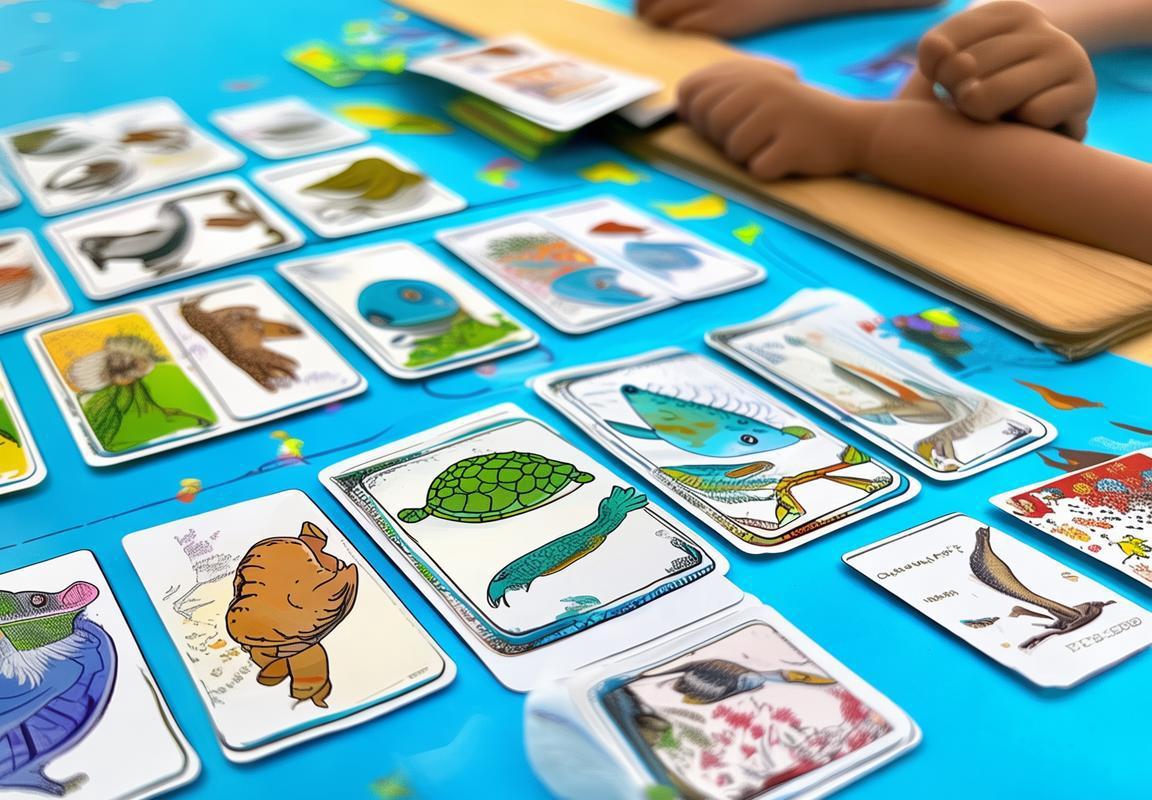
Hoạt Động Thực Hành
- Tạo Bức Tranh:
- In hoặc vẽ một bức tranh lớn với nhiều hình ảnh liên quan đến môi trường xung quanh như cây cối, chim, cá, rừng, sông, biển, đám mây, mặt trời, mặt trăng, v.v.
- Trên bức tranh, ẩn các từ tiếng Anh liên quan đến môi trường xung quanh.
- Giới Thiệu Trò Chơi:
- Giới thiệu trò chơi cho trẻ em bằng cách nói: “Hôm nay chúng ta sẽ chơi một trò chơi thú vị. Chúng ta sẽ tìm các từ tiếng Anh trong bức tranh này.”
- Thảo luận về ý nghĩa của các từ và cách chúng liên quan đến môi trường.
- Thực Hiện Hoạt Động:
- Trẻ em sẽ được yêu cầu tìm các từ ẩn trong bức tranh.
- Mỗi khi tìm thấy một từ, trẻ em có thể đọc to và giải thích ý nghĩa của nó.
- Thông báo cho trẻ em rằng họ có thể vẽ lại từ đó trên tờ giấy hoặc sổ tay của mình.
- Hoạt Động Thực Hành Thêm:
- Trẻ em có thể vẽ thêm các hình ảnh liên quan đến từ đó để.
- Tổ chức một cuộc thi nhỏ để trẻ em competing to find the most words in a given time.
- Kết Thúc Hoạt Động:
- Khen ngợi trẻ em vì những từ mà họ đã tìm thấy.
- Thảo luận về tầm quan trọng của việc bảo vệ môi trường và cách chúng ta có thể làm điều đó.
- Cung cấp cho trẻ em một tờ giấy hoặc sổ tay để họ có thể viết lại các từ đã tìm thấy và vẽ thêm hình ảnh liên quan.
- Hoạt Động Tăng Cường:
- Tạo một danh sách các từ liên quan đến môi trường và yêu cầu trẻ em viết chúng ra.
- Trẻ em có thể vẽ một bức tranh nhỏ của riêng họ, thêm vào các từ và hình ảnh liên quan đến môi trường.
- Đánh Giá Hoạt Động:
- Đánh giá hoạt động thông qua phản hồi của trẻ em về việc tìm kiếm từ và hiểu biết về môi trường.
- Khuyến khích trẻ em chia sẻ những gì họ đã học và những từ mà họ thích nhất.
- Hoạt Động Tạo Động:
- Tổ chức một buổi biểu diễn ngắn bằng cách yêu cầu trẻ em đọc to các từ mà họ đã tìm thấy và giải thích ý nghĩa của chúng.
- Trẻ em có thể biểu diễn một bài hát hoặc một đoạn kịch ngắn liên quan đến môi trường.
- Hoạt Động Tạo Tài Liệu:
- Tạo một cuốn sách nhỏ hoặc tờ giấy để trẻ em có thể lưu trữ các từ và hình ảnh liên quan đến môi trường.
- Trẻ em có thể thêm vào các từ mới mà họ học được trong tương lai.
- Hoạt Động Tạo Tương Tác:
- Tổ chức một buổi thảo luận nhóm về cách bảo vệ môi trường và những hành động cụ thể mà trẻ em có thể thực hiện.
- Hoạt Động Tạo Kinh Nghiệm:
- Đem trẻ em ra ngoài và thực hiện một cuộc dạo chơi ngắn trong công viên hoặc khu vực xanh để họ có thể trực tiếp quan sát và trải nghiệm môi trường xung quanh.
- Hoạt Động Tạo Kết Quả:
- Kết thúc buổi học bằng cách yêu cầu trẻ em viết một đoạn văn ngắn hoặc vẽ một bức tranh về những gì họ đã học và những gì họ muốn làm để bảo vệ môi trường.
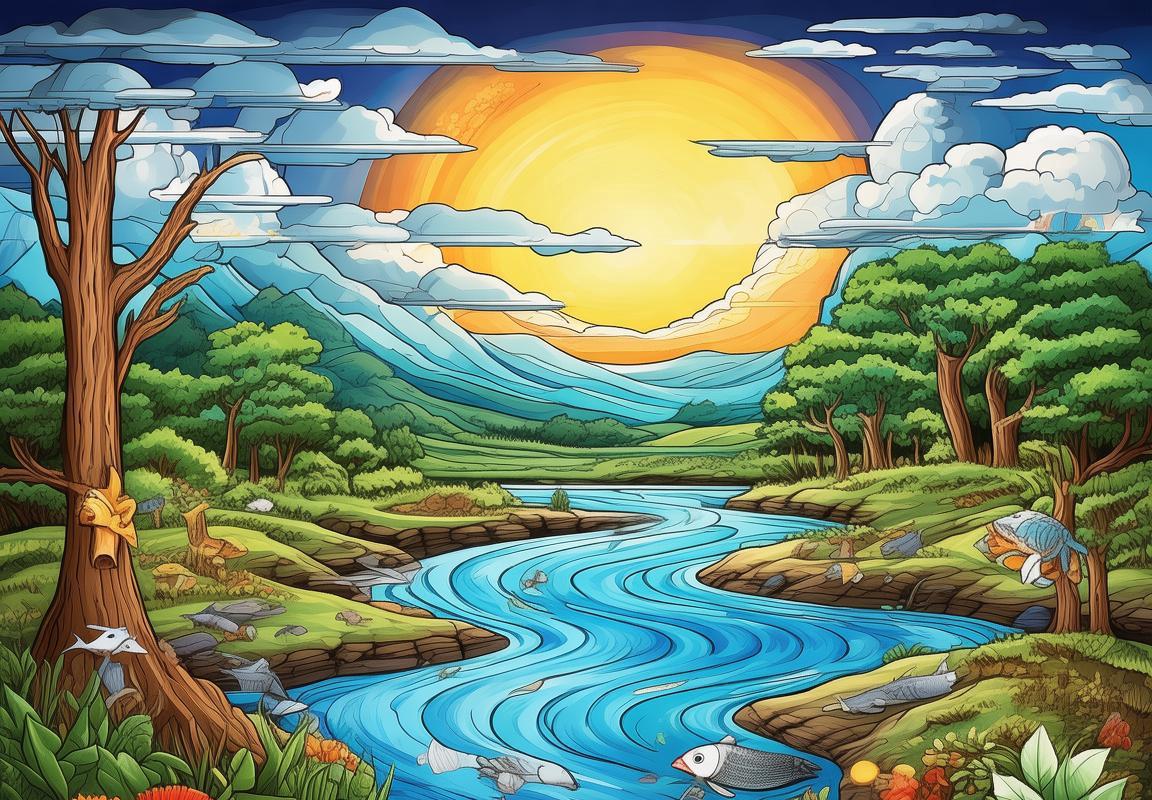
Cây Cối
- What’s this? It’s a tree!
- Look at the leaves. They are green.
- The tree has many branches. Can you count them?
- The tree makes us breathe fresh air.
2. Chim:
- Hey, look at the bird! It’s so beautiful.
- The bird has a blue tail.
- What sound does the bird make? (Chirp, chirp)
- The bird is flying high in the sky.
3. Cá:
- Look at the fish in the pond.
- The fish are swimming fast.
- The fish have shiny scales.
- The fish like to eat small bugs and plants.
4. Rừng:
- The forest is full of trees and animals.
- The trees are tall and green.
- Animals live in the forest. Can you see any?
- The forest is a home for many creatures.
5. Sông:
- The river flows gently.
- The water is clear and cool.
- Fish are jumping out of the water.
- The river is a place for animals to drink and play.
6. Biển:
- The sea is big and blue.
- We can see many fish in the sea.
- The sea has waves that go up and down.
- The sea is a place for boats to sail.
7. Đám Mây:
- The clouds are white and fluffy.
- The clouds move in the sky.
- Sometimes, it rains when the clouds are heavy.
- The clouds can make the sky look very beautiful.
8. Mặt Trời và Mặt Trăng:
- The sun is bright and warm.
- The sun rises in the morning and sets in the evening.
- The moon is shiny at night.
- The moon can make the night sky look magical.
9. Cây Cối:
- What color are the leaves? They are green.
- Why are the leaves green? Because they have chlorophyll.
- The leaves help the tree grow.
10. Chim:
- The bird has a beak to eat food.
- The bird has feathers to fly.
- The bird makes a sound with its beak.
11. Cá:
- The fish has gills to breathe underwater.
- The fish has a tail to swim.
- The fish can swim very fast.
12. Rừng:
- The forest has many different kinds of trees.
- The forest has many different kinds of animals.
- The forest is a special place.
13. Sông:
- The river flows from the mountains to the sea.
- The river provides water for animals and plants.
- The river is a part of the ecosystem.
14. Biển:
- The sea has a lot of salt in it.
- The sea is home to many different kinds of fish.
- The sea is very important for our planet.
15. Đám Mây:
- The clouds can change shape.
- The clouds can make rain.
- The clouds are part of the weather.
16. Mặt Trời và Mặt Trăng:
- The sun is very hot.
- The moon reflects the light of the sun.
- The sun and the moon are important for life on Earth.
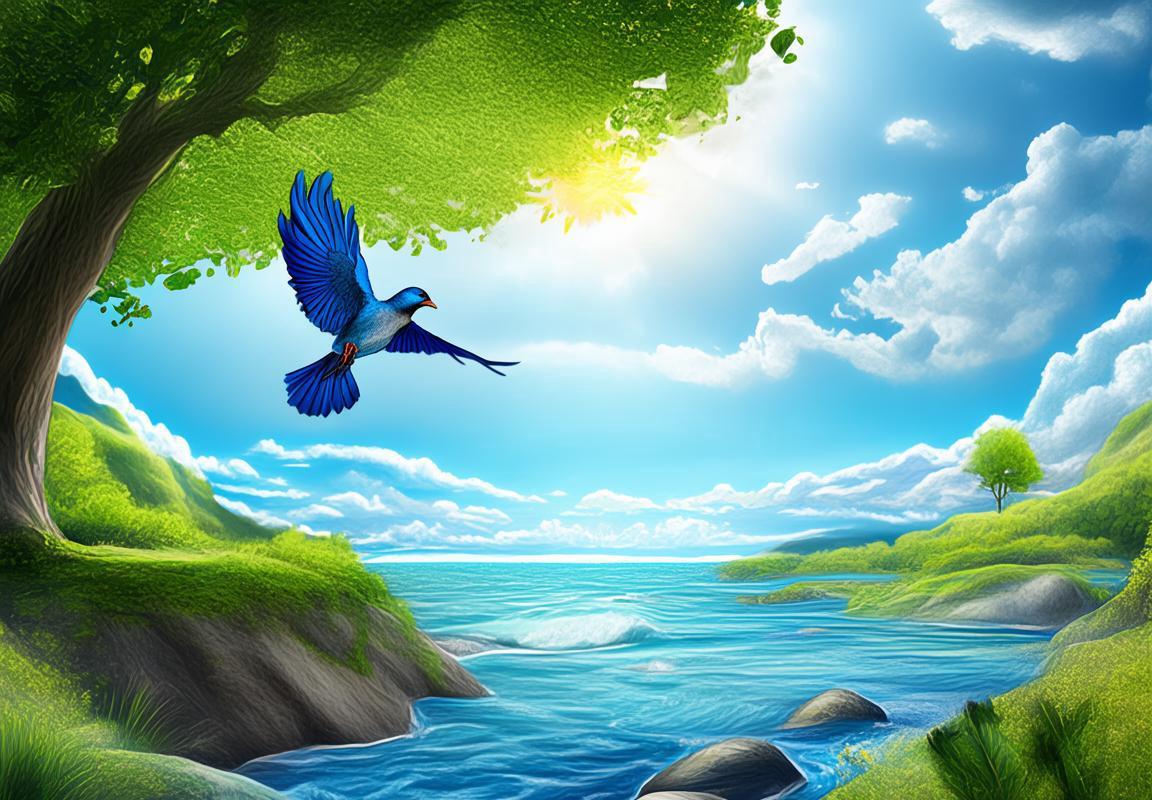
Chim
-
“Hello, kids! Let’s talk about birds. Birds are our friends in the sky. Do you know what sounds a bird makes? Let’s see!”
-
“Look at this beautiful sparrow. What do you think it says? Can you guess the sound it makes?”
-
“Sparrows chirp, ‘tweet, tweet!’ Now, let’s listen to the sound of a parrot. Listen carefully!”
-
“Parrots are very loud, ‘squawk, squawk!’ They can mimic sounds and even talk.”
-
“And here’s a seagull. Seagulls live near the sea and make a loud, ‘squawk, squawk!’ sound.”
-
“Let’s play a game. I’ll show you a picture of a bird, and you have to tell me what sound it makes. Ready? Let’s begin!”
-
“Picture 1: This is a swan. What sound does a swan make? (Silence) Let’s try again. ‘Quack, quack!’ That’s right!”
-
“Picture 2: This is a pigeon. What sound does a pigeon make? (Children answer) ‘Cock-a-doodle-doo!’ Yes, you’re correct!”
-
“Picture 3: This is a hummingbird. What sound does a hummingbird make? (Children answer) ‘Hum, hum!’ Exactly!”
-
“Great job, kids! You’re doing wonderful. Birds are not only beautiful to look at but also make wonderful sounds.”
-
“Let’s continue our adventure with birds. Do you know what a nest is? Birds build nests to lay their eggs and take care of their young.”
-
“Now, I’ll show you a picture of a bird’s nest. Can you guess which bird lives in this nest? (Children guess) ‘A bird with brown feathers!’ Yes, that’s right!”
-
“Birds play an important role in our ecosystem. They help control pests, spread seeds, and pollinate flowers. Let’s appreciate these wonderful creatures.”
-
“Remember, if you ever see a bird, take a moment to observe it and listen to its sounds. Birds are amazing!”
-
“Now, let’s have a little break and continue our learning adventure. I’m so proud of all of you!”
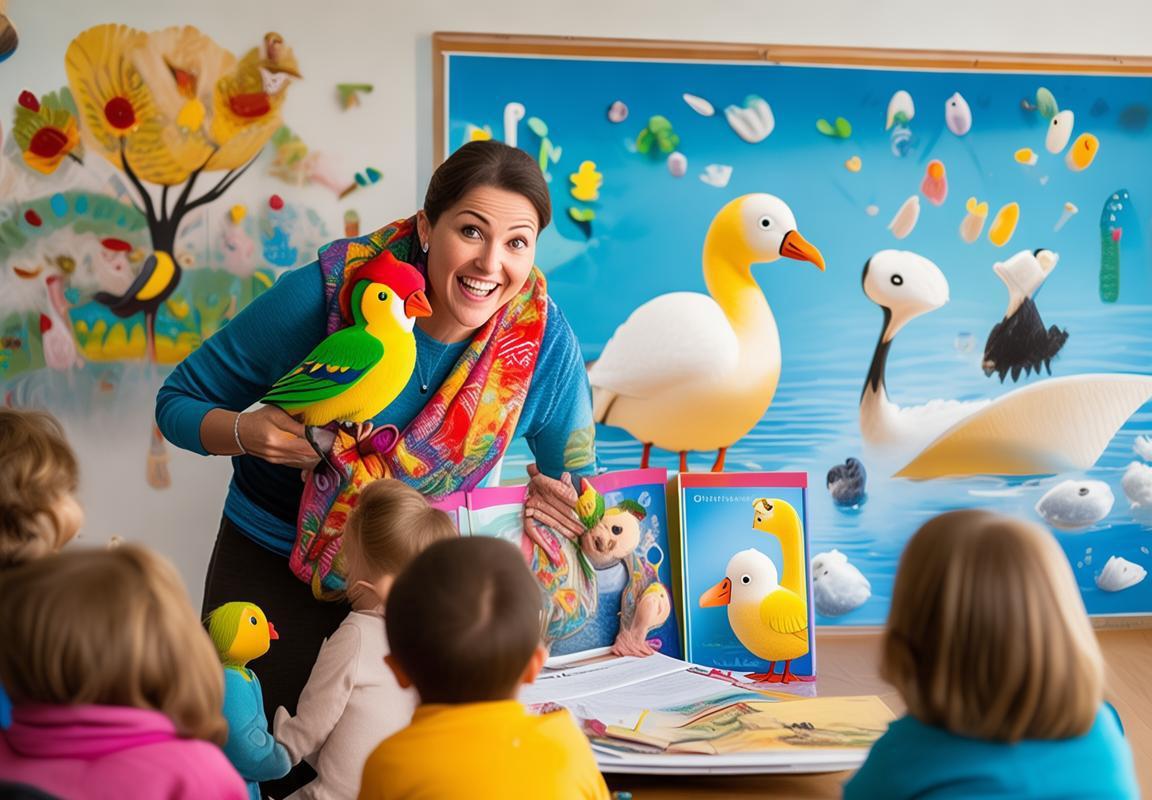
Cá
- “Hello, I’m a fish! I live in the water. Do you know what I like to eat? I love eating small fish and plants.”
- “Do you see the big fish over there? It’s called a shark. Sharks are strong and can swim very fast.”
- “Look at the little fish in the corner. They are called minnows. Minnows are small and colorful.”
- “Can you guess what this fish is? It has a long body and a pointed tail. It’s a swordfish!”
- “Fish are important for the ocean. They help keep the water clean and healthy.”
- “Do you know how fish breathe? They don’t have lungs like us. They breathe through their gills.”
- “Fish come in many different colors and shapes. Some are red, some are blue, and some are even transparent!”
- “If you find a fish in the ocean, remember to put it back. Fish need their home to be safe and clean.”
- “Would you like to be a fish for a day? Imagine swimming in the ocean and seeing all the beautiful fish.”
- “Let’s make a fish out of playdough. Roll a long snake and bend it to make a tail. Now, add some eyes and fins.”
**4. Rùa
- “Hello, I’m a turtle! I live in the water and on land. Do you know how I move? I use my flipper-like legs to swim and walk.”
- “Turtles can live a very long time. Some turtles have even lived more than 100 years!”
- “Look at the green turtle. It has a green shell. That’s why it’s called a green turtle.”
- “Turtles lay eggs. The eggs are buried in the sand, and the baby turtles hatch and swim to the ocean.”
- “Turtles are important for the ocean. They eat plants and help keep the water clean.”
- “Do you know what turtles eat? They love eating plants and small animals.”
- “Turtles have a hard shell that protects them from predators. But they are still very slow.”
- “If you see a turtle, be gentle. Turtles are fragile and need our help.”
- “Would you like to be a turtle for a day? Imagine swimming in the ocean and feeling the waves.”
- “Let’s make a turtle out of playdough. Roll a flat circle for the shell. Add a face with eyes and a tail.”
**5. Cua
- “Hello, I’m a crab! I live in the ocean and on the beach. Do you know how I move? I use my pincers to walk and pick up things.”
- “Crabs have a hard shell that protects them from predators. But they can’t move very fast.”
- “Look at the blue crab. It has a blue shell and long legs. That’s why it’s called a blue crab.”
- “Crabs eat plants, small animals, and even other crabs!”
- “Crabs are important for the beach. They help to clean the sand and keep it healthy.”
- “Do you know how crabs breathe? They have gills like fish, so they can breathe underwater.”
- “Crabs come in many different sizes and colors. Some are big, some are small, and some are even golden!”
- “If you find a crab, be careful. They have sharp pincers that can pinch you.”
- “Would you like to be a crab for a day? Imagine walking on the beach and picking up sand.”
- “Let’s make a crab out of playdough. Roll a flat circle for the shell. Add pincers and a face.”
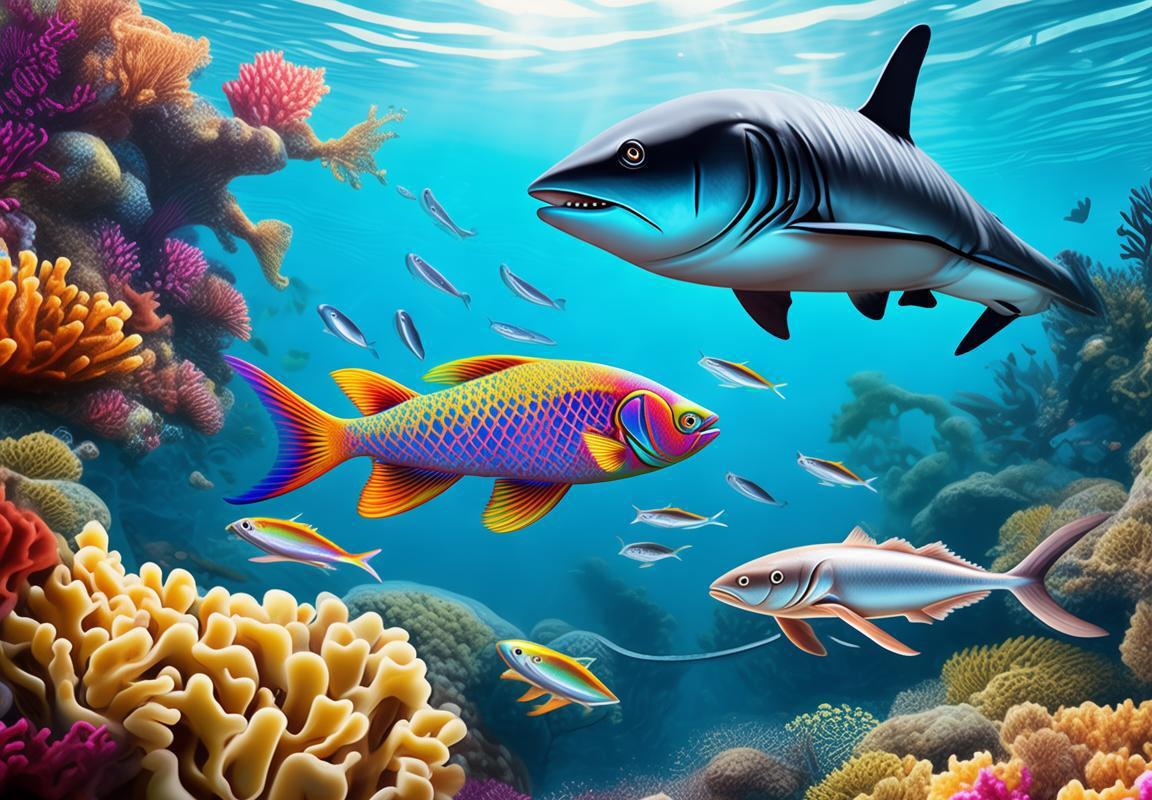
Rừng
- “Look, there’s a tall tree with green leaves. Can you see the bird sitting on it?”
- “What color are the leaves? They are green, just like the grass on the ground.”
- “Do you hear the sound of the leaves rustling? That’s the wind playing with the trees.”
- “There are many animals in the forest. Can you guess what they are?”
- “Listen, do you hear the sound of the squirrel? It’s running up the tree.”
- “And what about the sound of the bird? It’s singing a beautiful song.”
- “The forest is a magical place where animals live and play.”
- “Do you think the animals like to play hide and seek in the forest?”
- “Let’s find the bear. Can you hear its deep voice? It’s saying ‘r-um, r-um’ as it walks.”
- “The forest is home to many animals. We should take care of it and keep it clean.”
**5. Sông:
- “Look at the river flowing gently. It’s like a silver ribbon on the ground.”
- “Do you hear the sound of the water? It’s like a lullaby for the forest.”
- “The river is full of fish. Can you see them swimming?”
- “What color is the water? It’s clear and blue, just like the sky.”
- “The river flows through the forest, bringing water to all the plants and animals.”
- “Do you think the fish like to play with the water? They seem to be having a lot of fun.”
- “Let’s find the turtle. Can you see it? It’s slowly swimming along the river.”
- “The river is home to many creatures. We should protect it and keep it clean.”
- “The sound of the river is so peaceful. It makes us feel calm and happy.”
- “The river is a life-giving source for all the animals in the forest.”
**6. Biển:
- “Look at the big blue ocean. It’s so vast and beautiful.”
- “Do you hear the sound of the waves? It’s like a symphony of the sea.”
- “The ocean is home to many different animals. Can you see the dolphins playing?”
- “What color is the water? It’s deep blue, like a clear sky.”
- “The ocean is a place where animals come to live and grow.”
- “Do you think the fish like to play in the ocean? They seem to be having a great time.”
- “Let’s find the whale. Can you hear its deep voice? It’s saying ‘v-oo, v-oo’ as it swims.”
- “The ocean is a magical place where animals live and thrive.”
- “We should take care of the ocean and keep it clean.”
- “The sound of the ocean is so soothing. It makes us feel relaxed and happy.”
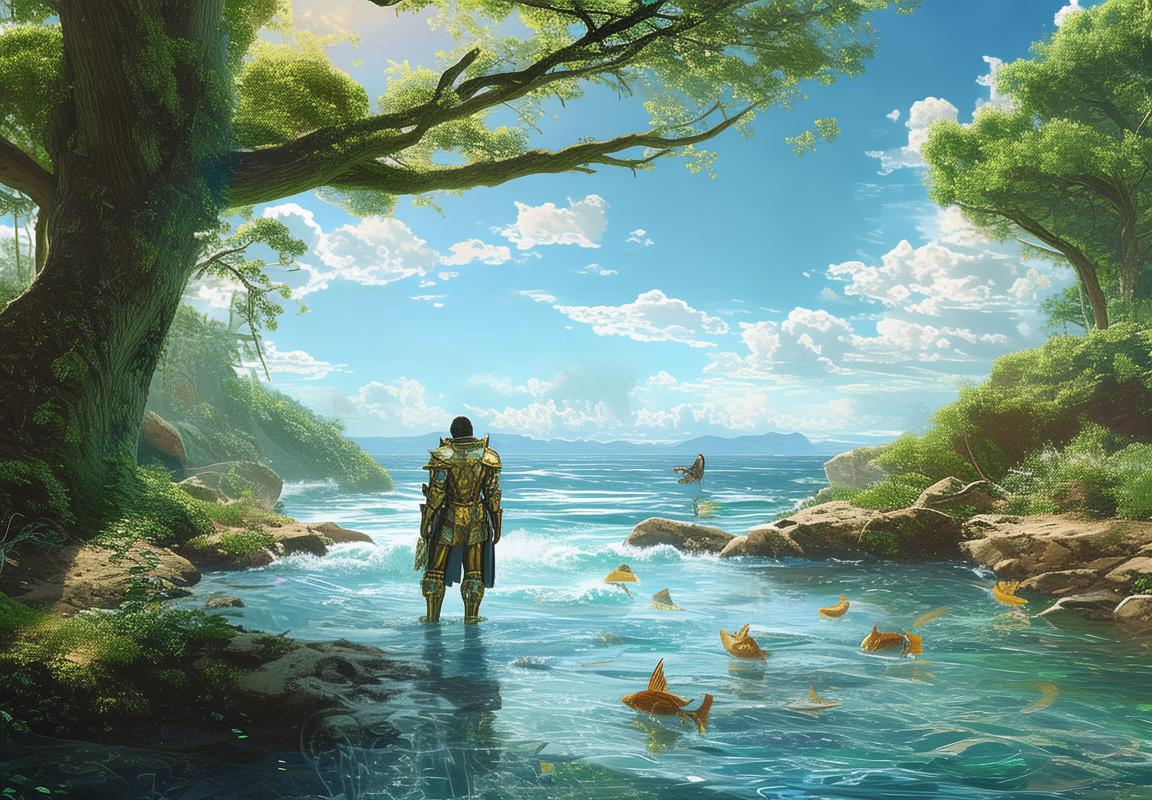
Sông
Tạo nội dung học về các bộ phận của cơ thể bằng tiếng Anh kèm hoạt động thực hành
Hoạt Động Thực Hành
- Giới Thiệu:
- Mục Đích: Giúp trẻ em nhận biết và mô tả các bộ phận của cơ thể bằng tiếng Anh.
- Thời Gian: 30 phút.
- Thiết Bị: Bảng đen, bút chì, hình ảnh các bộ phận cơ thể (mắt, mũi, miệng, tai, vai, lưng, tay, chân, đầu, chân tay, ngực, bụng).
- Bước 1:
- Giới Thiệu Các Bộ Phận:
- Trẻ em sẽ được xem các hình ảnh của các bộ phận cơ thể.
- Giáo viên sẽ mô tả từng bộ phận bằng tiếng Anh và viết chúng lên bảng đen.
- Ví dụ: “This is an eye. It’s a part of the face.”
- Bước 2:
- Thực Hành Đọc:
- Giáo viên sẽ đọc tên các bộ phận một lần nữa và trẻ em sẽ theo sau.
- Ví dụ: “Eye, eye, eye.”
- Bước 3:
- Hoạt Động Nối:
- Giáo viên sẽ vẽ một hình ảnh của cơ thể và trẻ em sẽ nối các bộ phận vào đúng vị trí.
- Ví dụ: Trẻ em nối mắt vào vị trí mắt trên hình ảnh.
- Bước 4:
- Hoạt Động Tự Động:
- Giáo viên sẽ yêu cầu trẻ em tự mình vẽ một hình ảnh của cơ thể và đặt tên cho các bộ phận bằng tiếng Anh.
- Ví dụ: “I have an eye. My eye is blue.”
- Bước 5:
- Hoạt Động Giao Tiếp:
- Giáo viên sẽ hỏi trẻ em về các bộ phận cơ thể bằng tiếng Anh.
- Ví dụ: “What is this?” và trẻ em sẽ trả lời bằng tiếng Anh.
- Giáo viên sẽ ghi lại các câu trả lời trên bảng đen.
- Bước 6:
- Hoạt Động Tập Trung:
- Giáo viên sẽ chọn một trẻ em và yêu cầu trẻ đó đứng lên và chỉ vào các bộ phận cơ thể của mình.
- Ví dụ: “Show me your eye.”
- Bước 7:
- Hoạt Động Hợp Tập:
- Giáo viên sẽ chia trẻ em thành nhóm nhỏ và yêu cầu họ cùng nhau thảo luận về các bộ phận cơ thể và cách sử dụng chúng.
- Ví dụ: “Work together and tell each other about your eyes.”
- Bước 8:
- Hoạt Động Đóng Phép:
- Giáo viên sẽ hướng dẫn trẻ em làm một bài tập đóng phèp, nơi họ sẽ sử dụng các từ tiếng Anh để mô tả các bộ phận cơ thể.
- Ví dụ: “Let’s act out what we have learned. Stand up and show us your face, your eyes, your mouth.”
- Bước 9:
- Tóm Tắt:
- Giáo viên sẽ tóm tắt lại các bộ phận cơ thể đã học và nhấn mạnh ý nghĩa của việc biết và sử dụng chúng bằng tiếng Anh.
- Ví dụ: “Today, we learned about our bodies. It’s important to know the names of our body parts in English.”
- Bước 10:
- Đánh Giá:
- Giáo viên sẽ đánh giá trẻ em dựa trên sự tham gia và thành tựu của họ trong hoạt động thực hành.
- Ví dụ: “Great job, everyone! You did a wonderful job learning about your body parts in English.”
Kết Luận
Hoạt động thực hành này giúp trẻ em không chỉ học được các bộ phận cơ thể bằng tiếng Anh mà còn tăng cường kỹ năng giao tiếp và nhận biết cơ thể của họ.
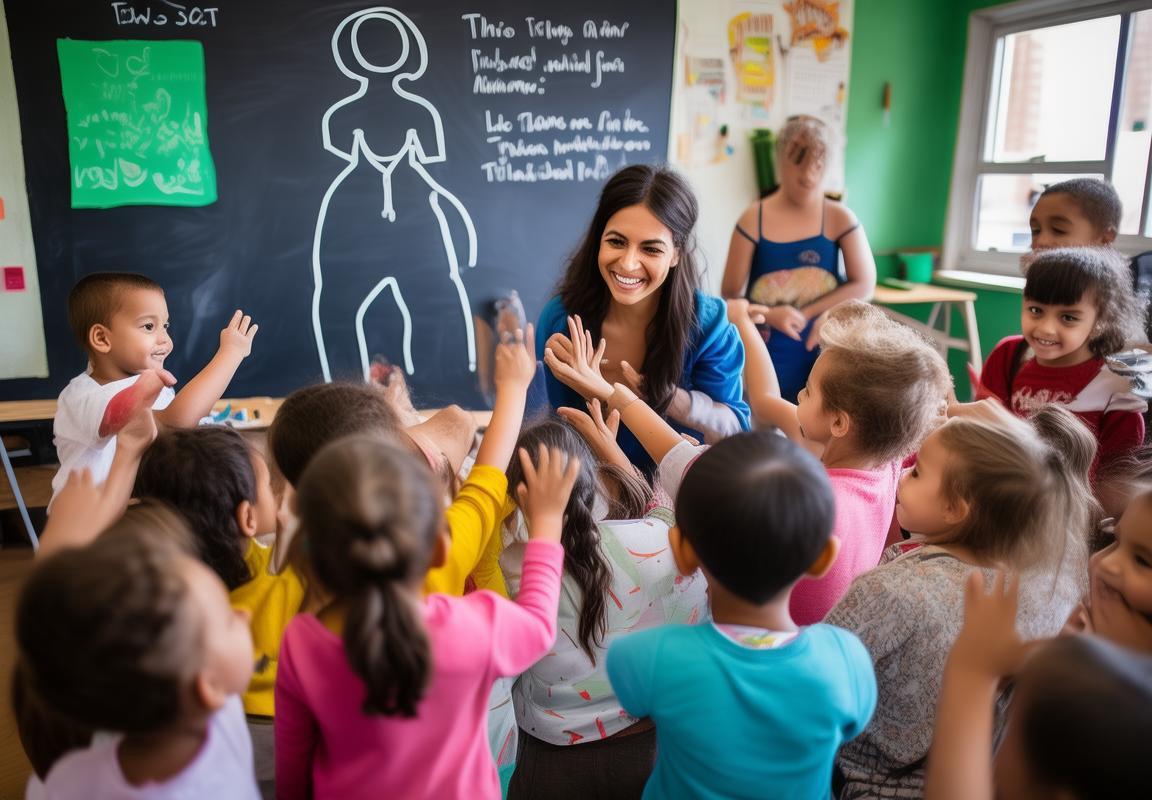
Biển
-
Bể Nuôi Cá: “Look at the fish in the aquarium. They are swimming so happily. What color are the fish? Are they red, blue, or yellow?”
-
Bãi Biển: “The beach is so beautiful! The sand is white, and the water is blue. Can you see the waves? They are like tiny mountains.”
-
Vịnh: “The bay is calm today. The water is like a mirror. The sky is above the water, and the sun is shining. It’s a perfect day for a swim!”
-
Rocks at Sea: “Look at the rocks by the sea. They are sharp and slippery. The waves keep hitting them. Sometimes, they make a loud noise.”
-
Shells: “Shells are everywhere on the beach. They come in many shapes and sizes. Some are round, some are long, and some are flat. Can you find your favorite shell?”
-
Sea Creatures: “The sea is home to many creatures. There are crabs, starfish, and octopuses. They are all so interesting. Do you know what a crab does? It walks sideways!”
-
Boats and Ships: “Boats and ships are on the sea. Some are small, and some are very big. They carry people and things from one place to another. Can you see a ship in the distance?”
-
Sunset at Sea: “The sun is setting over the sea. The sky is full of colors. Red, orange, and pink. It’s a beautiful time of the day.”
-
Fishermen: “Fishermen are working on the sea. They catch fish with their nets. They work hard every day to bring food to our tables.”
-
Sea Birds: “Birds are flying over the sea. They are looking for fish. They dive into the water and catch them. They are so skilled!”
-
Sea Turtles: “Sea turtles are swimming in the ocean. They are protected by the government. They are very important for the sea. They lay eggs on the beach.”
-
Coastal Cities: “Coastal cities are built near the sea. People live there. They enjoy the sea and the beach. They go swimming, surfing, and fishing.”
-
Marine Parks: “Marine parks are places where we can learn about the sea. They have many species of fish and other sea creatures. We can see them up close.”
-
Sea Pollution: “We need to take care of the sea. It is very important for our planet. We should not throw trash into the sea. It can harm the animals and the environment.”
-
Sea Adventures: “If you want to have an adventure, you can go on a boat. You can sail, dive, or even swim with the dolphins. It’s a magical experience!”
-
Conclusion: “The sea is a wonderful place. It has so much to offer. Let’s learn more about it and take care of it for future generations.”
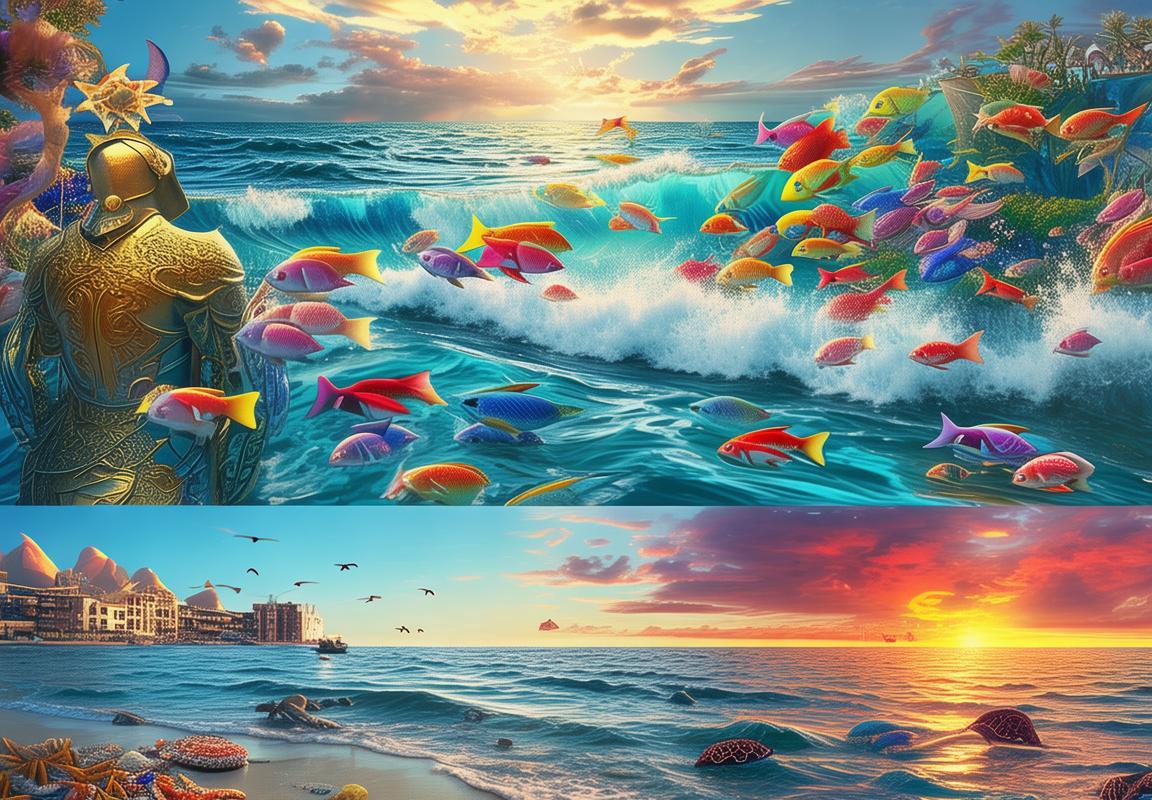
Đám Mây
A: Hello, what’s your name?
B: Hello! My name is Mr. Tiger. What’s your name?
A: I’m Alice. How do you say “hello” in your language?
B: Hello in my language is “नमस्ते” (Namaste).
A: Oh, nice to meet you, Mr. Tiger. Do you like to play in the sun?
B: Yes, I do. The sun feels warm and cozy. What about you, Alice?
A: I like the sun too. It makes me feel happy. Do you have any friends here?
B: Yes, I have a friend named Mr. Elephant. He’s very friendly.
A: Can I meet him?
B: Of course! Mr. Elephant is over there, near the water fountain.
A: Hi, Mr. Elephant! My name is Alice. Do you like the water fountain?
C: Hello, Alice! Yes, I love the water fountain. It’s so refreshing!
A: It’s nice to meet you, Mr. Elephant. Do you have any other friends?
C: Yes, I have a friend named Mrs. Monkey. She’s very playful.
A: Can I meet Mrs. Monkey?
C: Sure! Mrs. Monkey is over there, in the tree.
A: Hi, Mrs. Monkey! My name is Alice. Do you like playing in the tree?
D: Hello, Alice! Yes, I love playing in the tree. It’s so fun!
A: It’s nice to meet you, Mrs. Monkey. Do you have any more friends?
D: Yes, I have a friend named Mr. Parrot. He can talk in many languages.
A: Can I meet Mr. Parrot?
D: Of course! Mr. Parrot is over there, near the sandbox.
A: Hi, Mr. Parrot! My name is Alice. Do you like to talk to people?
E: Hello, Alice! Yes, I love to talk to people. I can speak English, Spanish, and many more languages!
A: That’s amazing, Mr. Parrot! I wish I could talk in so many languages.
E: You can learn too, Alice! With practice, you can speak in many languages.
A: Thank you, Mr. Parrot. I’m going to practice now.
B: That was a great conversation, Alice! It’s nice to make new friends.
A: Yes, it was! I had a lot of fun talking to all the animals.
B: I’m glad you enjoyed it. If you want to talk to more animals, just come back here.
A: I will! Thank you, Mr. Tiger!
Chú thích:– A: Alice, một cô bé 5-6 tuổi.- B: Mr. Tiger, con voi cảnh.- C: Mr. Elephant, con voi cảnh.- D: Mrs. Monkey, con khỉ cảnh.- E: Mr. Parrot, con chim cảnh.
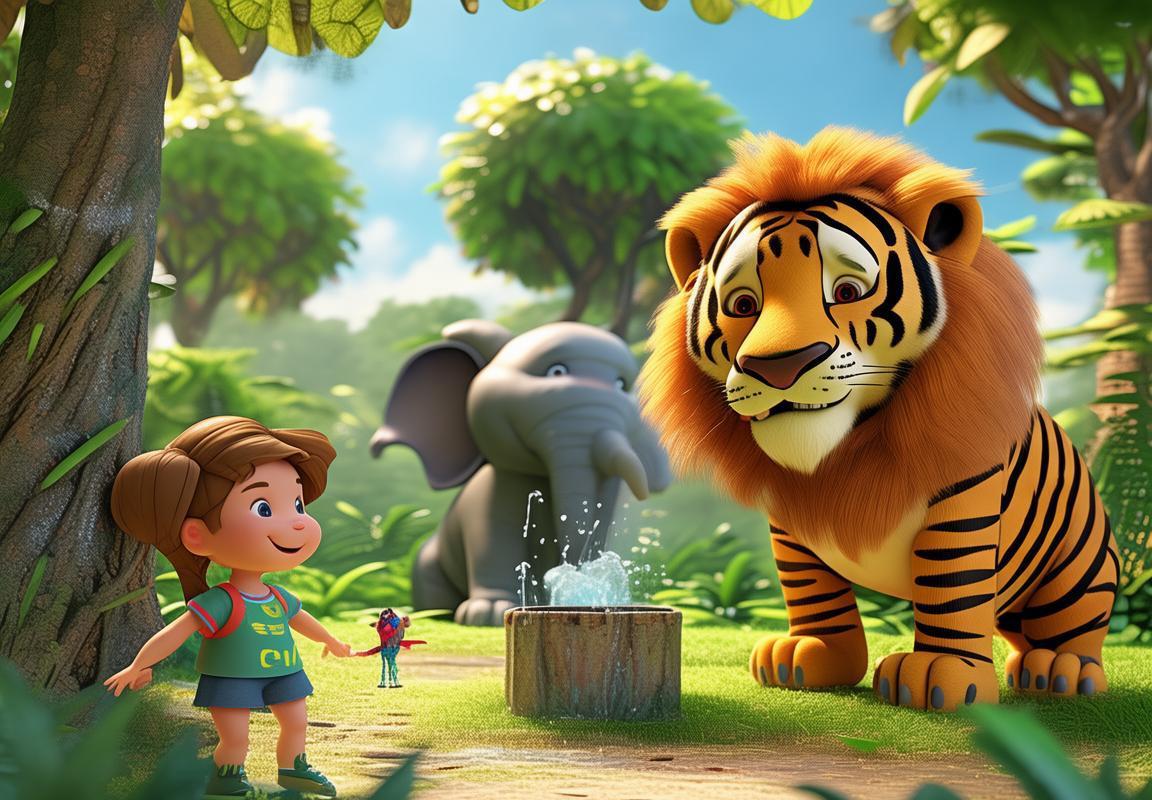
Mặt Trời và Mặt Trăng
Hội thoại:
Em: Good morning, Mr. Teacher!
Mr. Teacher: Good morning, Em! How are you today?
Em: I’m fine, thank you. What’s the plan for today?
Mr. Teacher: Today, we have a special activity. We’re going to the park to learn about nature and animals. Do you know what we will do there?
Em: No, I don’t. What will we do?
Mr. Teacher: First, we will take a walk around the park and look for different animals. We will see birds, squirrels, and maybe even a deer! Then, we will have a picnic and talk about what we saw.
Em: That sounds fun! Can I bring my lunch?
Mr. Teacher: Of course, you can. Remember to bring some healthy snacks. Now, let’s put on our backpacks and head to the park.
Em: Yay! I can’t wait to see the animals.
Mr. Teacher: Me too, Em. It’s going to be a great day. We’ll also play a game where we have to guess the name of the animals we see. Are you ready?
Em: Yes, I’m ready! I love games!
Mr. Teacher: Great! Let’s go. Remember to be quiet and listen to the sounds of the park. We’ll have a lot of fun today.
Hoạt Động Thực Hành:
- Tham Quan Công Viên:
- Hướng dẫn trẻ em nhận biết các loài động vật và thực vật trong công viên.
- Giải thích tên gọi và đặc điểm của từng loài.
- Thức Ăn Sáng Tạo:
- Trẻ em sẽ mang theo đồ ăn riêng và cùng nhau tổ chức một bữa tiệc ngoài trời trong công viên.
- Hướng dẫn trẻ em cách dọn dẹp sau khi ăn xong.
- Chơi Game Đoán Loài Động Vật:
- Mr. Teacher sẽ mô tả đặc điểm của một loài động vật mà không nói tên.
- Trẻ em sẽ phải đoán đúng tên của loài động vật đó.
- Học Tiếng Anh Thông Thường:
- Mr. Teacher sẽ sử dụng các từ và cụm từ tiếng Anh liên quan đến công viên và động vật trong các hoạt động trên.
- Trẻ em sẽ lặp lại và sử dụng những từ mới đã học trong ngữ cảnh thực tế.
